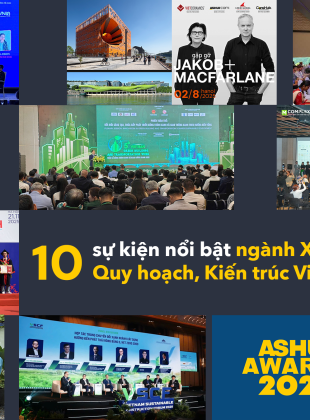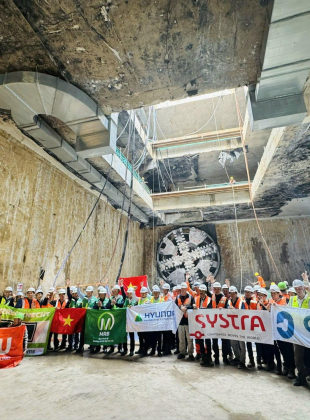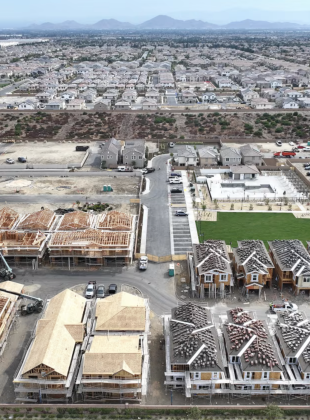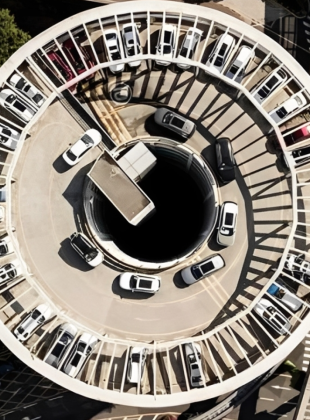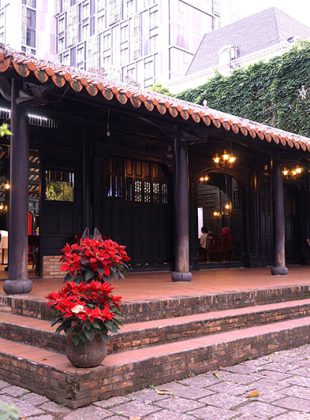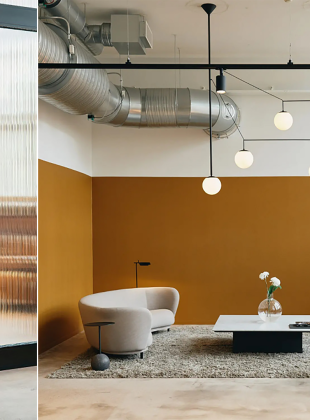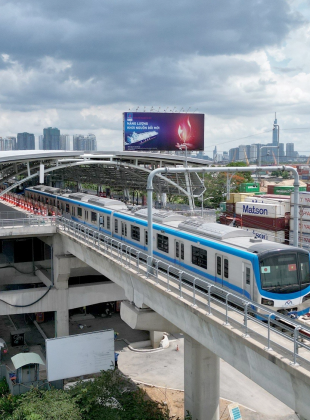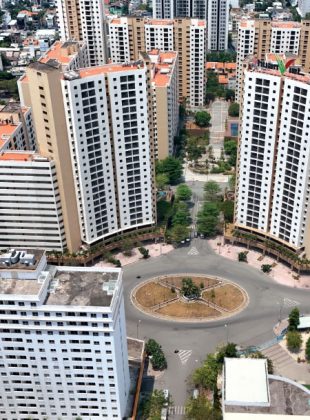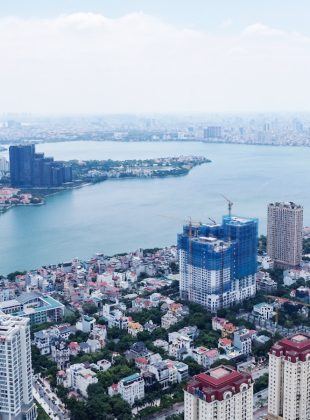
Multiple stunning French-Indochinese buildings were constructed in Sài Gòn, now known as Hồ Chí Minh City, during the French colonial period from 1862 to 1945.
However, years of war and socioeconomic change have led to the loss, transformation, or deterioration of much of this architectural heritage.
This nostalgia has inspired writer Trần Hữu Phúc Tiến to compile and release a new book, Kiến trúc Pháp – Đông Dương: Dấu tích ‘Sài Gòn – Hòn ngọc Viễn Đông’ (French-Indochinese Architecture: Traces of ‘Sài Gòn – The Pearl of the Far East’).
Published by the Hồ Chí Minh City General Publishing House in collaboration with the National Archives Centre 2, the book commemorates the 325th anniversary of Sài Gòn – Hồ Chí Minh City’s establishment (1698-2023) and the 50th anniversary of national reunification (1975-2025).
The book serves as an encyclopedia of major French-Indochinese buildings in HCM City, detailing their history, architectural features, and the stories behind them, offering readers a deeper understanding of the city once dubbed “The Pearl of the Far East”.
HCM City remains the country’s largest urban centre. The period between 1862 and 1945 marked its transformation into a modern, advanced city, distinct from the feudal urban model that existed before.
French influence, combined with contributions from Vietnamese residents and communities from various regions, shaped a vibrant and dynamic urban area. This fusion of Eastern and Western elements was built upon the legacy of the ancient Gia Định urban area.
By the early 20th century, particularly from the 1920s onward, the French Cochinchina government proudly promoted Sài Gòn as La Perle de l’Extrême-Orient (The Pearl of the Far East), positioning it as a must-visit destination for tourists, investors, and international visitors.
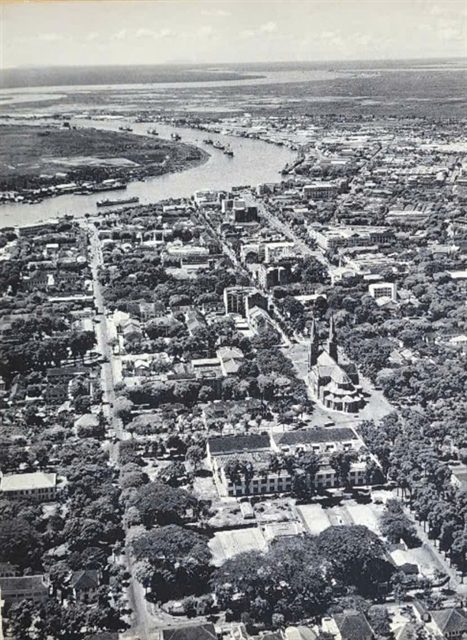
The city’s beauty extended beyond its landscapes to its architecture, economy, culture, and people. Architecturally, it boasted a diverse array of impressive structures, from mansions and residential buildings to markets and public works.
In recent years, urban residents and people across the country have felt the loss of cultural heritage amid rapid urban development, particularly with the rise of the internet and modernisation. This has created an ongoing tension between preserving historical values and embracing new growth.
“I wrote this book not only out of nostalgia but also to remind readers of the beauty of the past,” Tiến told Việt Nam News.
“The goal is to explore these memories and draw lessons for the present and future. Every structure holds a story. I hope to inspire the younger generation—those living in a new era—to appreciate and protect this valuable heritage before it is lost.”
Many buildings designed by French architects are commonly referred to as French or colonial architecture. However, the author argued that a more accurate term would be Indochinese architecture or French-Indochinese architecture, as these structures reflect both French cultural influences and local adaptations to the regional climate.
“Many of these structures, while inspired by French or other European models, are still creative works of the French diaspora, shaped by international knowledge and local cultural elements,” Tiến said.
“In Việt Nam, this resulted in a distinctive architectural evolution, influenced not only by French and Vietnamese elements but also by French-Chinese and French-Khmer designs.”
The book offers an overview of urban planning and architecture in Sài Gòn from 1862 to 1945, highlighting significant French-Indochinese structures. It also includes regional breakdowns of key buildings, outlining their architectural aesthetics, historical functions, and significance.
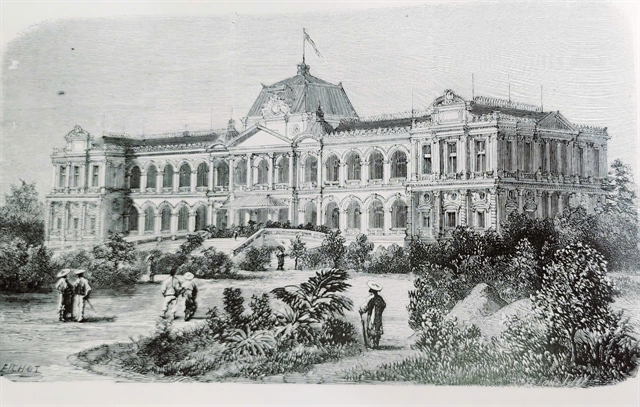
Each section is accompanied by images, diagrams and historical documents, helping to illustrate the evolution of these buildings.
Additionally, the book features expert commentaries—both from pre-1945 and contemporary scholars—on Sài Gòn’s urban planning, architecture and landscape.
“The streets are like they have been hand-drawn, measured with a ruler, orderly, straight, wide, and spacious. Many streets have wide areas in the middle for grass planting and bronze commemorative statues,” wrote Vietnamese journalist Phạm Quỳnh in 1918. “In the evening, hundreds of large electric lights illuminate like a long string of shimmering balloons fluttering right in the middle of the street, creating a very spectacular scene.”
Tiến’s research draws from field surveys and years of study, as well as archival materials from the National Archives Centre II, which holds an extensive collection of diagrams, photographs, publications, and official documents on Sài Gòn and the southern region dating back to the 19th century.
It also incorporates selected documents and images from libraries and archives in France, the United States and Singapore, alongside books and articles discussing Indochinese development and the history of Sài Gòn in the past and HCM City at present.
“French architecture in Indochina, including Việt Nam, is an important part of the nation’s architectural and cultural heritage,” Tiến said.
“These structures showcase French influence and embody the fusion of diverse cultural elements throughout Việt Nam’s 4,000-year history.
“They form a part of social life and urban memories. When people think of Sài Gòn, they immediately recall iconic landmarks like Bến Thành Market or Notre-Dame Cathedral.
“Beyond their architectural beauty, these buildings tell rich stories of urban development, governance, and historical figures. Their histories offer valuable lessons that remain relevant today and into the future.”
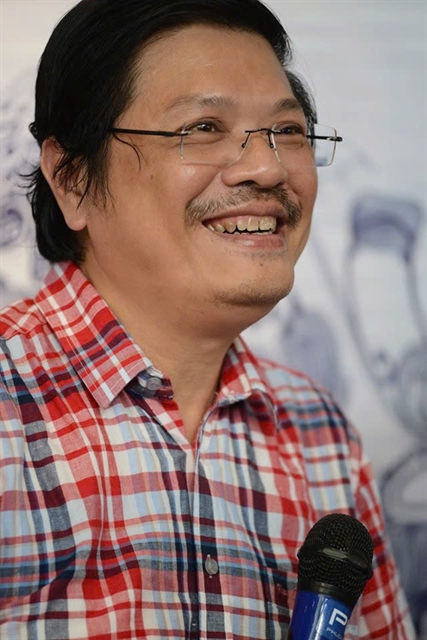
Trần Hữu Phúc Tiến was born in HCM City in 1962. He has worked as a journalist for Tuổi Trẻ (Youth), Saigon Times, and Thế Giới Mới (New World) and completed a journalism internship at Oxford University with a Reuters scholarship.
His previous works include Sài Gòn Không Phải Ngày Hôm Qua (Sài Gòn Is Not Just Yesterday), Sài Gòn Hai Đầu Thế Kỷ (Saigon Then and Now), and Kiến trúc Pháp – Đông Dương, Những Viên Ngọc Quý Tại Hà Nội (French Architecture in Indochina: Precious Gems in Hà Nội).
With this latest publication, he hopes to preserve the historical and cultural significance of Sài Gòn’s architectural past for future generations.
Lương Hương (VNS)





